 |
 |
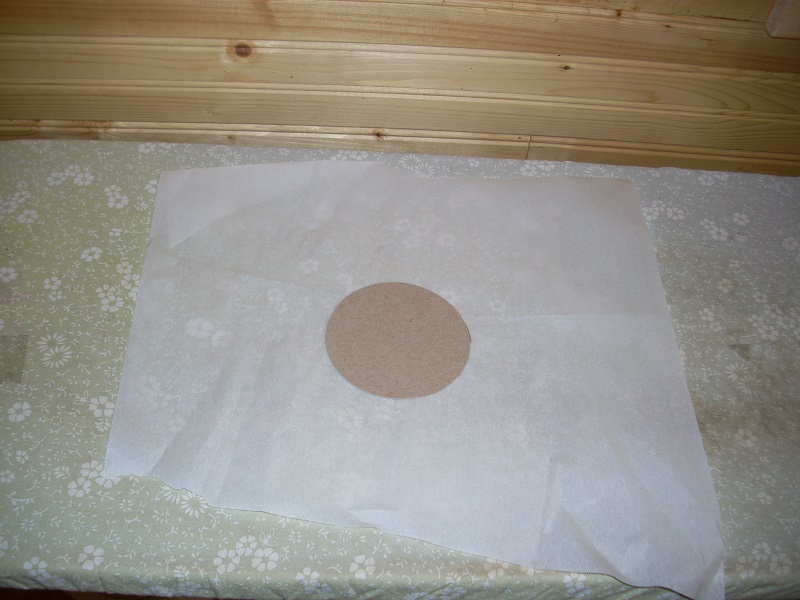 (1) CHOOSE YOUR BASE:
|
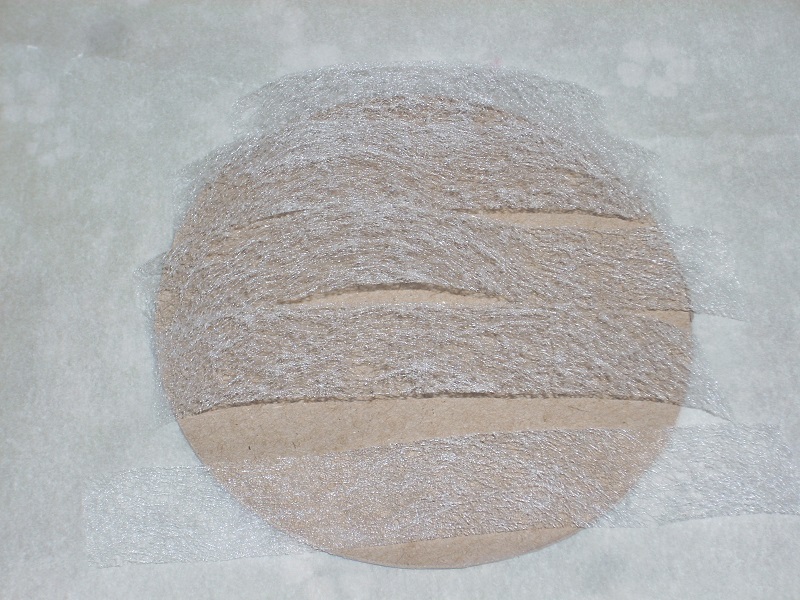 (2) LAY FUSIBLE BONDING ON BASE:
|
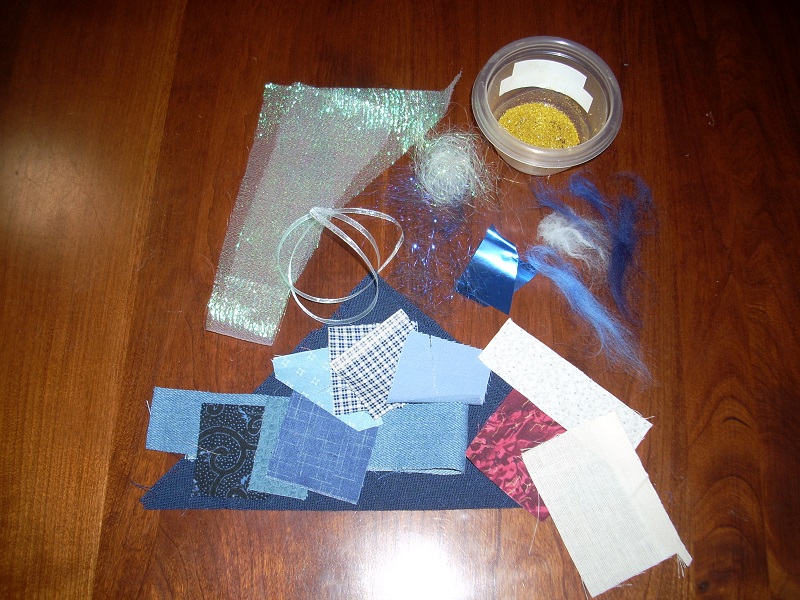 (3) GATHER YOUR MATERIALS:
Make sure you like the look of everything together. |
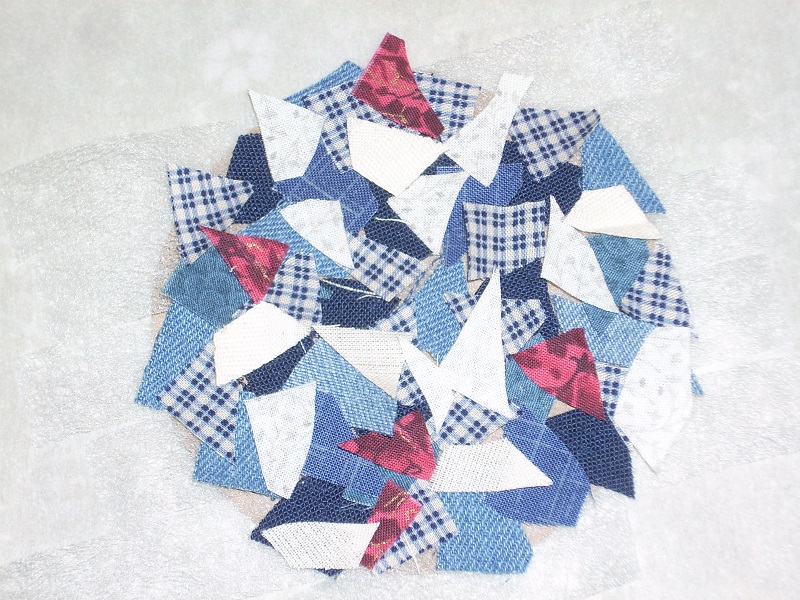 (4) COVER BASE WITH FABRIC SCRAPS:
The only rules are:
|
 (5) PUT ON ANY EXTRA EMBELLISHMENTS: Over the fabric layer, put any desired sparkly paper, ribbon, angelina fibers, wool roving, glitter. |
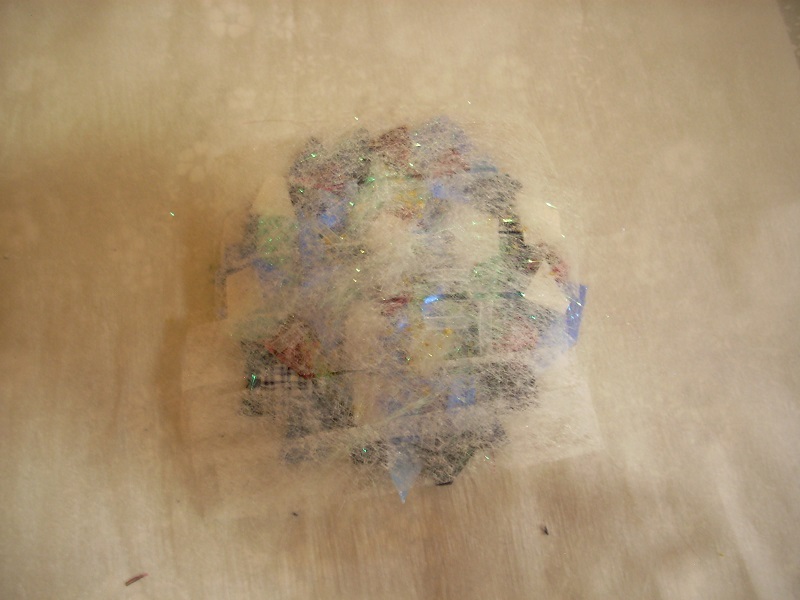 (6) ANOTHER LAYER OF FUSIBLE BONDING: Put another layer of fusible bonding. |
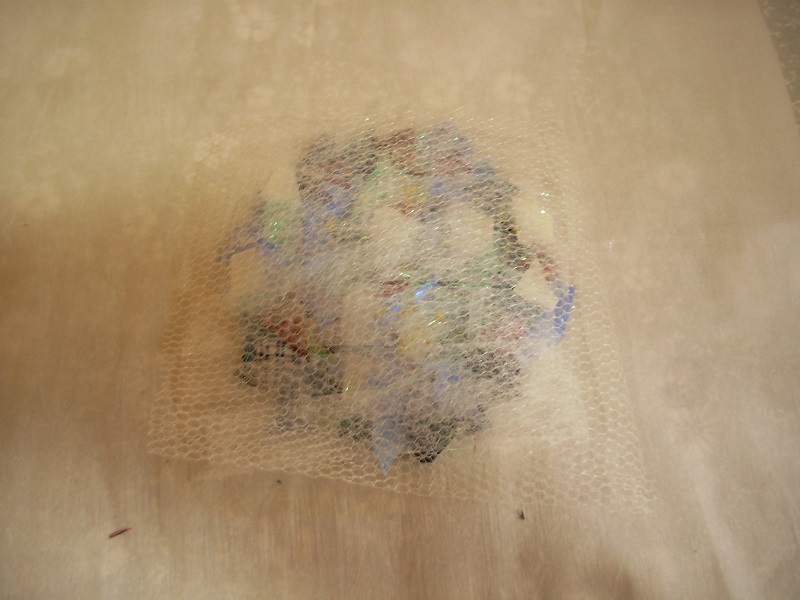 (7) PUT A SHEER LAYER ON TOP: These all work well: organza, dense webbing, tulle. It should be transparent, so the beauty of the fabrics shines through. (You have to look at this photo very carefully to see the webbing on top!) |
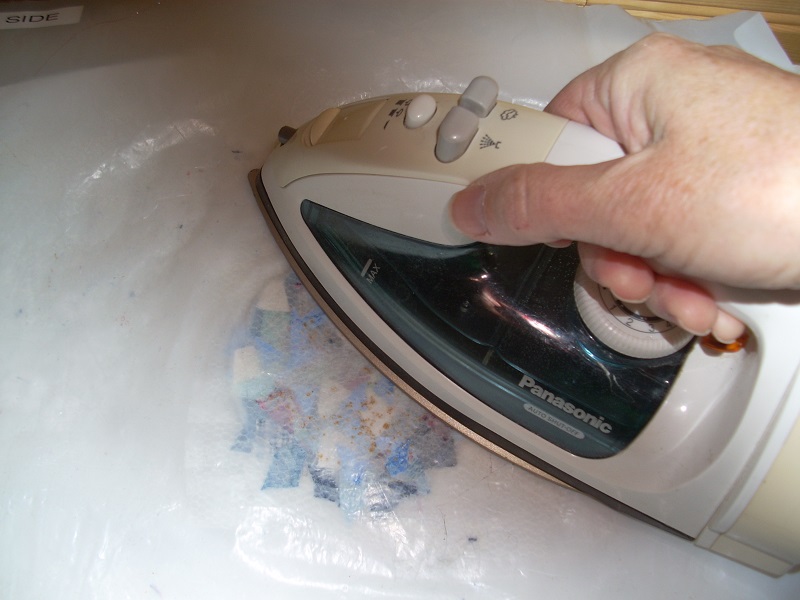 (8) IRON TO FUSE YOUR LAYERS: Very carefully lay a non-stick pressing sheet over the top. You don't want to move anything on your creation! The pressing sheet is extremely important, since you don't want to gum up your iron. Iron according to your fusible webbing instructions. |
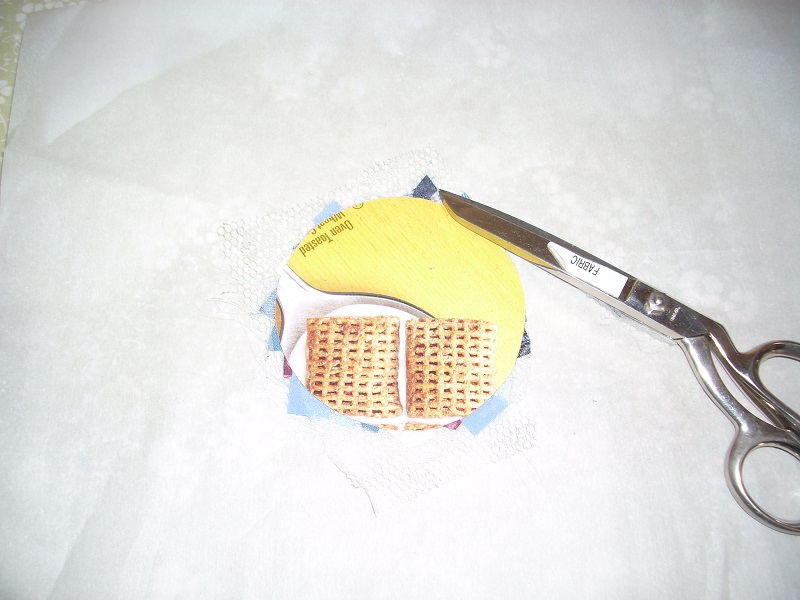 (9) TRIM EDGES: Let cool for a few seconds, and then trim your edges (from the back side, where you can see your base more easily). |
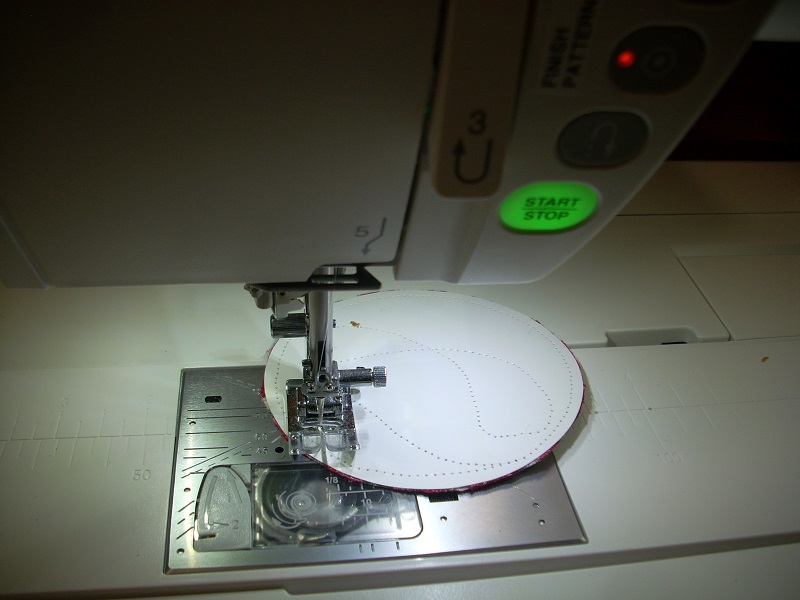 (10) MACHINE QUILT THROUGH ALL LAYERS: Machine quilting adds even more texture/interest to the scrap fabric, and is an extra force in keeping it held together. You can use invisible thread, matching color, contrasting color... You can quilt a certain pattern, or just random. Have fun! If I use invisible thread, then I sew on the back, so I can see my quilting lines. |
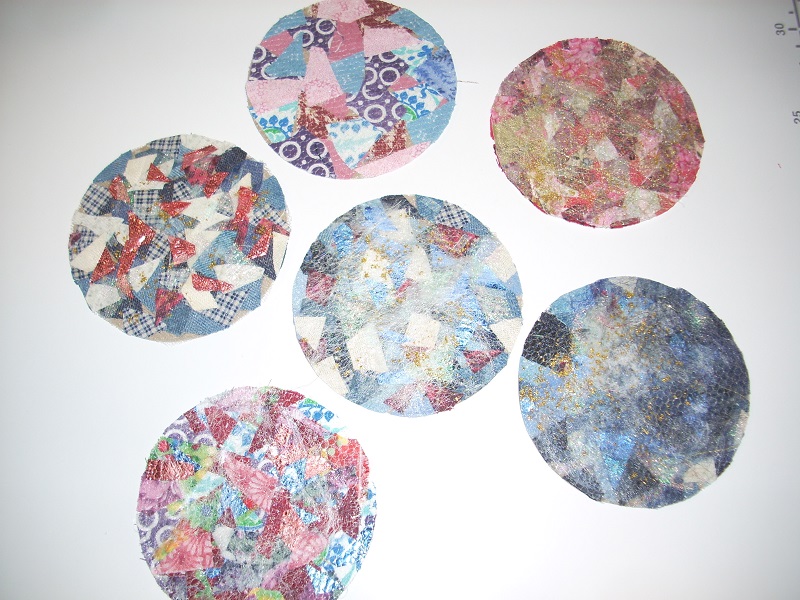 (11) USE YOUR FABRIC AS DESIRED: My coaster tutorial shows how I make these discs into beautiful and functional two-sided coasters. With a felt backing for the scrap fabric, it can be used for gorgeous book covers. |
|